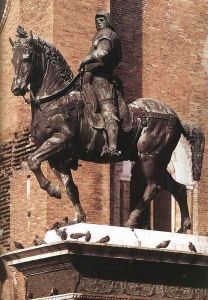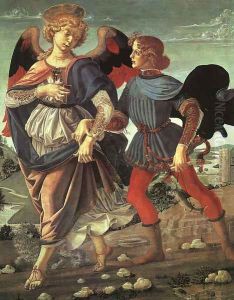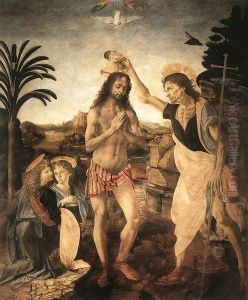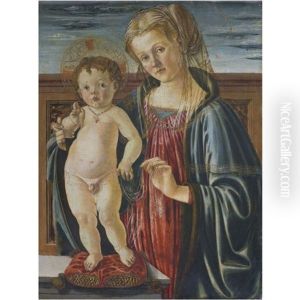Andrea Del Verrocchio Paintings
Andrea del Verrocchio, born Andrea di Michele di Francesco de' Cioni in 1435 in Florence, Italy, was a prominent figure during the Early Renaissance period. Known for his diverse talents, Verrocchio was not only an influential painter but also an accomplished sculptor, goldsmith, and teacher, whose workshop nurtured the skills of several future masters, including Leonardo da Vinci, Pietro Perugino, and possibly Sandro Botticelli. His contributions to the arts during the Renaissance were significant, both for his artistic output and for his role in the development of his apprentices.
Verrocchio's early life is somewhat obscured, but it is known that he was the son of Michele di Francesco Cioni, a tile and brick maker, and his mother, who died when Andrea was very young, was from a family of the lower nobility. Despite the modest circumstances of his family, Verrocchio's artistic talents were recognized early on, leading to an apprenticeship with a goldsmith. This training laid the foundation for his multifaceted artistic career. By the 1460s, Verrocchio had established himself in Florence, working across various media, including metalwork, painting, and sculpture.
One of his most famous sculptures, the bronze statue of David, created in the late 1460s, reflects the detailed attention Verrocchio paid to human anatomy and emotion, characteristics that would influence his pupils. Another renowned work is the equestrian statue of Bartolomeo Colleoni in Venice, which was not only a testament to his skill in bronze but also showcased his ability to convey power and motion.
As a painter, Verrocchio's works were known for their detailed narrative and delicate treatment of figures, as seen in the Baptism of Christ, which he painted with the help of his pupil, Leonardo da Vinci. This painting is particularly noted for the angel on the left side, attributed to Leonardo, which stands out for its softness and complexity, contrasting with Verrocchio's more rigid figures.
Verrocchio's influence extended beyond his immediate circle through his teachings and collaborations. His workshop was a center of innovation in Florence, attracting and influencing a new generation of artists who would carry forward the Renaissance ideals. His approach to art, characterized by a rigorous study of nature and an insistence on the harmony between form and function, left a lasting imprint on his pupils and the broader artistic community.
Andrea del Verrocchio died in 1488 while working on the statue of Colleoni. His legacy, however, continued to thrive through the works of his students and the continued admiration for his art. Today, Verrocchio is remembered as a central figure in the Renaissance, who significantly contributed to the development of Renaissance art through his works and teachings.
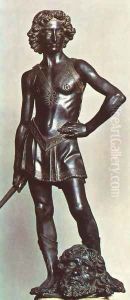
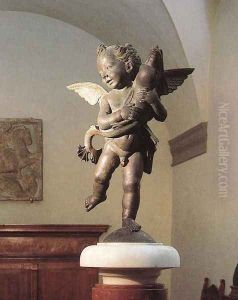

![Portrait of a Woman [detail 2]](https://www.niceartgallery.com/imgs/319874/s/andrea-del-verrocchio-portrait-of-a-woman-detail-2-f85d4c7c.jpg)
![Portrait of a Woman [detail 1]](https://www.niceartgallery.com/imgs/319873/s/andrea-del-verrocchio-portrait-of-a-woman-detail-1-b263c737.jpg)


